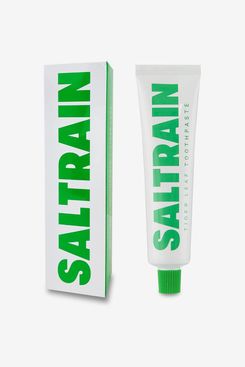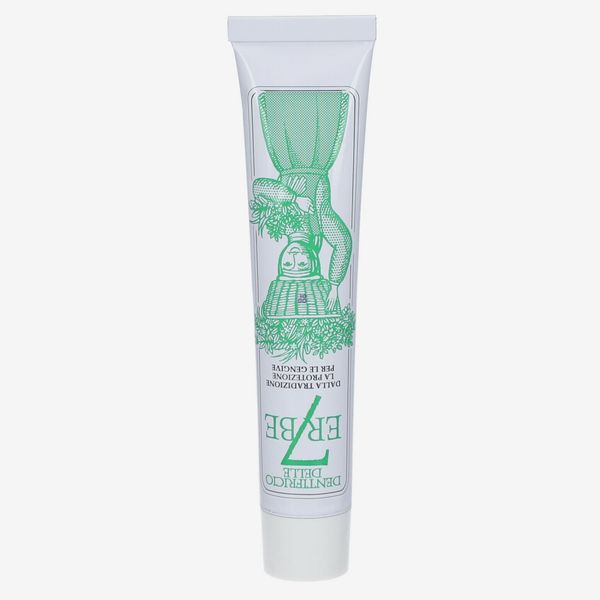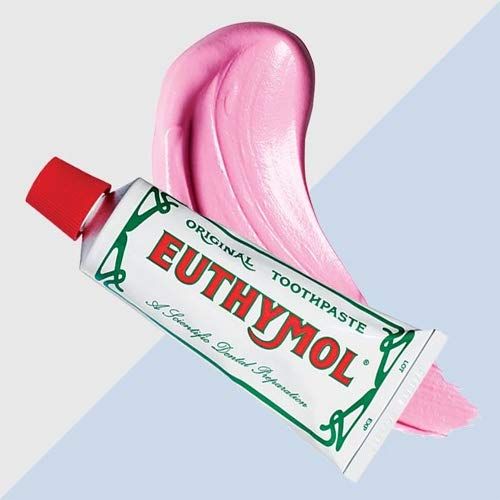
As a traveler, my favorite places to shop are the most regular places. Drugstores, groceries, and stationery shops, primarily. This is where I feel most like an amateur anthropologist — finding clues about the new place I’m immersed in by observing everyday objects. The item that I find most thrilling to discover, though, is toothpaste — because of all the things in the drugstore, it’s the least likely to hurt me if I translate the packaging incorrectly. What I’ve learned is that toothpaste ingredients and flavors vary widely depending on where they come from, and they sometimes can tell you a thing or two about the traditions and preferences of the culture that uses them. From gorgeous European heritage brands that have been relegated to the bottom shelf to the bright, fruity flavors in Japan that are not just for kids, there are so many trends to notice and curiosities to try. The world of international oral care is broader than just slightly different packaging or variations of mint flavors. Below are my favorites, as well as a few that I’ve got my eye on.
When I first picked up this curious pink tube at a discount store in Tokyo, I was confused by the flavor. Why pair apple and chamomile together? I bought it because I’d run out of toothpaste and this seemed like the most fun option. The flavor, to my surprise, was much more nuanced than I anticipated. It leads with a gentle mint, but is a little sweet and fruity, and has a whisper of an earthy floral flavor. I was blown away and have bought it every time I’ve seen it since.
Orange mint is a current limited-edition flavor of Nadeshiko Baking Soda toothpaste, which is essentially Japan’s better-designed answer to Arm & Hammer. As drinking orange juice after brushing your teeth is a notoriously bad idea, I was initially skeptical of this flavor, which tastes zesty and sour with an odd but not unpleasant minty aftertaste. The combination of the slightly sticky texture and the refreshingly fruity flavor makes for an extra-fun brushing experience.
Salty toothpaste is relatively common outside of the U.S., as it’s slightly abrasive, pH-balancing, and anti-bacterial. Saltrain is a new addition to the international toothpaste game, and specializes in mineral-charged, low-sodium gray salt toothpastes, including this one, which also includes tiger leaf (also known as cica), a healing and calming herb that’s popular in K-beauty.
Recently, I went on a mission for a fresh tube of Vicco from Duals Natural, which is a wonderful spice shop with locations in the East Village and Williamsburg. As I approached the counter, the owner exclaimed that this is the best toothpaste and told me a story about a 30-year customer who’s never been to the dentist. His enthusiasm is warranted, because Vicco is an exceptionally unique and effective product. First-time users will be surprised to find that it has the color and texture of clay and tastes as earthy and fragrant as an Indian spice shop smells. And rightfully so, because it contains a whopping 18 different herbs and barks. It’s delicious, and leaves my mouth feeling extraordinarily clean.
If I ever go to Australia, this is the toothpaste I’d hope to find on my drugstore mission. Grants is a family business that makes a variety of natural toothpastes, the most intriguing of which is Propolis, which features bee propolis as an antibacterial, anti-inflammatory active ingredient. With the koala illustration on the tube, it’s a cute souvenir from down under that you’ll actually use.
It’s hard to describe the flavor of this Portuguese staple. Due to the lack of sweeteners and artificial flavors, it just tastes fresh. Not particularly minty, just neutral and clean. Of course, the best part is the distinctively Portuguese packaging design, but this product also produces that rare post-dentist feeling, which is easier to recognize in earnest when it’s not masked by burning mint.
Dentifricio Delle 7 Erbe is a toothpaste with a uniquely refreshing herbal flavor that comes from the herbs chosen for their antibacterial and oral health properties: sage, icelandic lichen, licorice, mint, mallow, thyme, yarrow. I’ve never tried anything like it, and it has become my undisputed favorite for its Old World charm and bright, natural flavor. This one is hard to find, but you’ll have the best luck in northern Italy.
[Note: 1000 Farmacie lists prices in euros, so the price shown here is an approximate conversion to U.S. dollars.]
I’ve never seen a toothpaste more decidedly Italian than this one. Pasta Del Capitano has been making toothpaste since 1905, and though most of the company’s toothpastes have very average medical packaging, the 1905 range highlights throwback design and unique flavors. This particular one does actually taste like a Sicilian lemon confection, with a hint of herbal cough drop.
Officine Universalle Buly is one of the fanciest apothecary brands in the world, and although the thing to get there is an embossed comb, you shouldn’t sleep on the toothpaste, which is delightfully extravagant. Of the three flavors, the most esoteric is the Apple from Montauban, which is a town in southern France. Extra credit if you pair this with Buly’s orange dental floss.
[Note: Officine Universelle Buly lists prices in euros, so the prices shown here is an approximate conversion to U.S. dollars.]
Botot toothpaste touts itself as the first toothpaste ever invented, way back in 1755 for King Louis XV. Though the current formula isn’t exactly the same as the original, its provenance makes it worth hunting down if you find yourself in France. Though everywhere on the internet says it’s cinnamon flavored, it actually tastes more like anise and clove.
High on my wishlist is this unicorn from Estonia. Notable ingredients include kuril tea, cloudberry, and lingonberry. Babushka Agafia has an impressive selection of regionally specific flavors like Siberian Black Birch, Red Algae of Sakhalin, and Volcanic Salt of Kamchatka. It might be worth a trip to Estonia just to find them all.
[Note: Lady Makeup lists prices in Polish zloty, so the price shown here is an approximate conversion to U.S. dollars.]
No toothpaste list would be complete without perennial Strategist favorite Euthymol, which hails from the U.K. and tastes like those pink wintergreen lozenges in my Nana’s candy bowl. I’ve been buying this bathroom shelf stunner since 2009, when I first discovered it upon moving to London. As a wide-eyed art-school student, it was the obvious choice because it was the cheapest ($2 at the time!) and the prettiest option at Boots.
The Strategist is designed to surface the most useful, expert recommendations for things to buy across the vast e-commerce landscape. Some of our latest conquests include the best acne treatments, rolling luggage, pillows for side sleepers, natural anxiety remedies, and bath towels. We update links when possible, but note that deals can expire and all prices are subject to change.


















